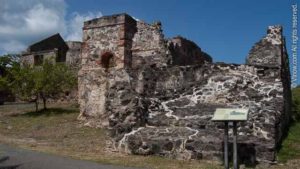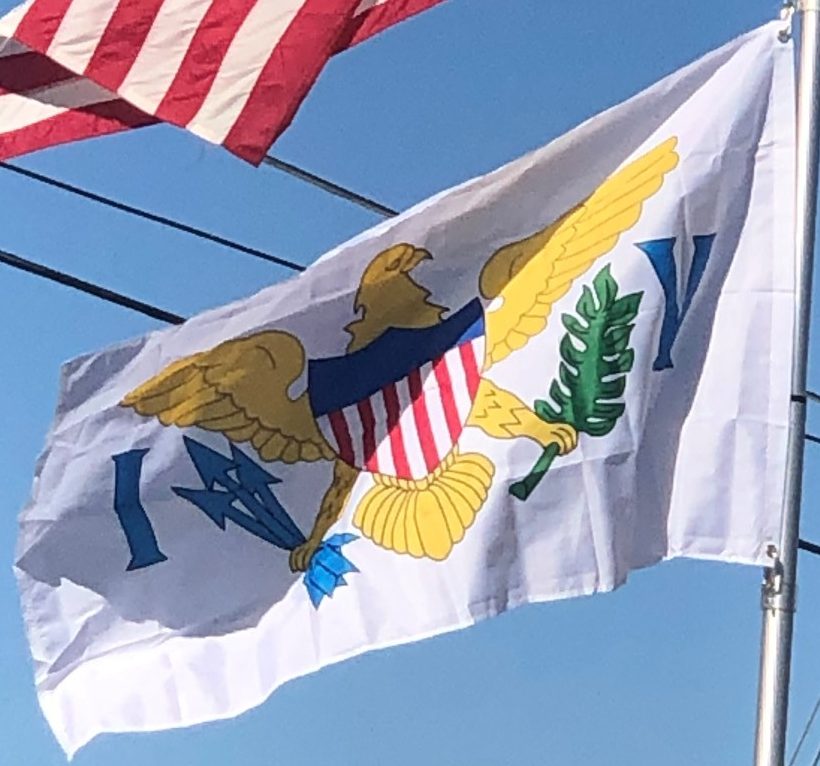
The first encounter Columbus had with the Caribs quickly erupted into a battle. When Columbus and his crew decided to move on to other islands, they kidnapped six Arawaks to guide them. Although Columbus left without founding a colony, many more battles between the Spanish and Caribs followed over the next century.
The French and Danish colonizers finished the job the Spanish had begun. They tried to convert the Caribs and Arawaks to Catholicism and Lutheranism, which largely failed. They also enslaved the native populations to work on plantations. With tobacco having already been cultivated on the islands, it made a good cash crop. Later on, coffee, sugar, and cotton also were grown.
Danish Rule:
The Danish West India Company settled on St. Thomas in 1672, settled on St. John in 1694, and purchased St. Croix from France in 1733. The islands became royal Danish colonies in 1754, named the Danish West Indian Islands. Sugarcane, produced by slave labor, drove the islands’ economy during the 18th and early 19th centuries.
The Danish West India and Guinea Company are also credited with naming the island St. John. The Danish crown took full control of St. John in 1754 along with St. Thomas and St. Croix. Sugarcane plantations such as the famous Annaberg Sugar Plantation were established in great numbers on St. John because of the intense heat and fertile terrain that provided ideal growing conditions. The establishment of sugarcane plantations also led to the buying of more slaves from Africa. In 1733, St. John was the site of one of the first significant slave rebellions in the New World when Akwamu slaves from the Gold Coast took over the island for six months.

The Danish were able to defeat the enslaved Africans with help from the French in Martinique. Instead of allowing themselves to be recaptured, more than a dozen of the ringleaders shot themselves before the French forces could capture them and call them to account for their activities during the period of rebel control. It is estimated that by 1775, slaves outnumbered the Danish settlers by a ratio of 5:1. The indigenous Caribs and Arawaks were also used as slave labor to the point of the entire native population being absorbed into the larger groups. Slavery was abolished in the Virgin Islands on July 3, 1848.
Although some plantation owners refused to accept the abolition, some 5,000 Black people were freed while another 17,000 remained enslaved. In that era, slaves labored mainly on sugar plantations. Other crops included cotton and indigo. Over the following years, strict labor laws were implemented several times, leading planters to abandon their estates, causing a significant drop in population and the overall economy. In the late 1800s, numerous natural disasters added to diminish the economy. For the remainder of the period of Danish rule the islands were not economically viable and significant transfers were made from the Danish state budgets to the authorities in the islands. In 1867 a treaty to sell St. Thomas and St. John to the United States was agreed, but the sale was never effected. A number of reforms aimed at reviving the islands’ economy were attempted, but none had great success. A second draft treaty to sell the islands to the United States was negotiated in 1902 but was defeated in the upper house of the Danish parliament in a tie vote.
American Rule:
The onset of World War I brought the reforms to a close and again left the islands isolated and exposed. During the submarine warfare phases of the war, the United States, fearing that the islands might be seized by Germany as a submarine base, again approached Denmark about buying them. After a few months of negotiations, a selling price of $25 million in United States gold coin was agreed, equivalent to $563.15 million in 2017 dollars. At the same time the economics of continued possession weighed heavily on the minds of Danish decision makers, and a consensus in favor of selling emerged in the Danish parliament.
